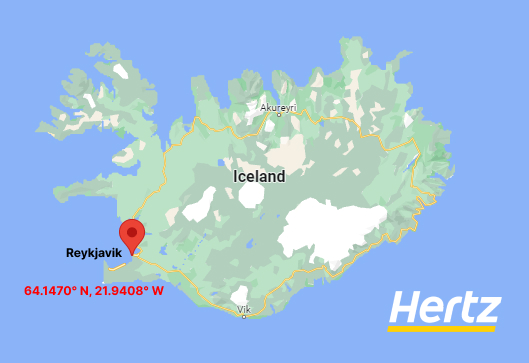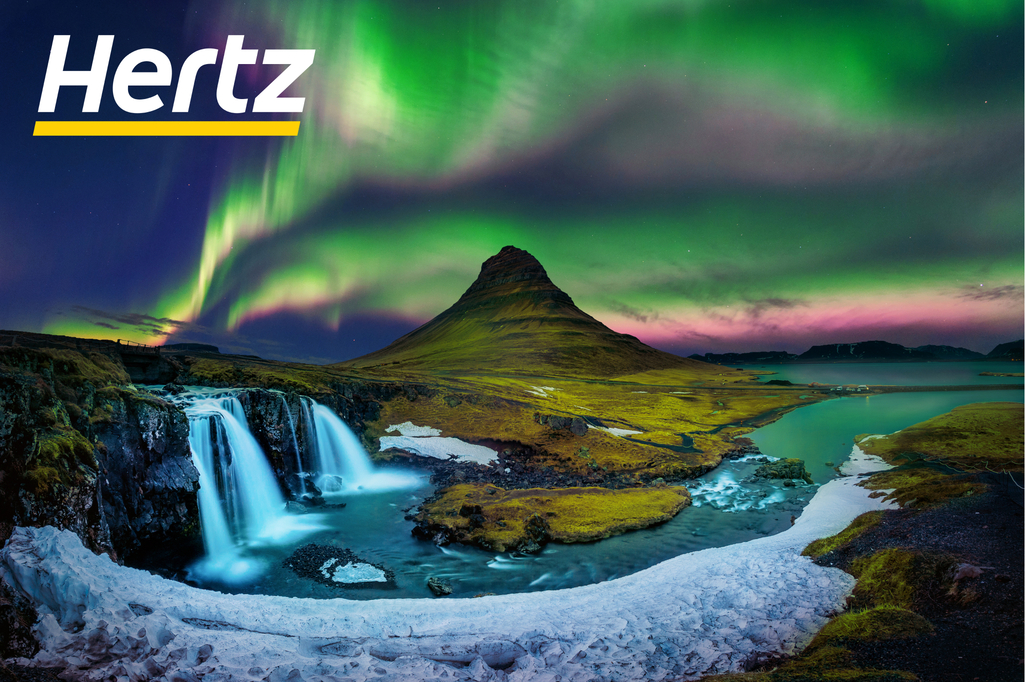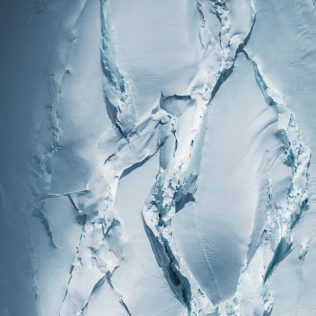Thanks to Iceland’s latitude and longitude of 65° 00′ N and 18° 00′ W, this island can experience the midnight sun in summer and be blessed by the Northern Lights in winter. This article will delve into the wonders of Iceland’s latitude and discover how this remarkable location contributes to its exceptional natural phenomena and biodiversity.
Iceland’s Unique Position on the Globe
Iceland’s Latitude Coordinates
Nestled in the North Atlantic Ocean, Iceland sits between latitudes 63° and 67° N. Positioned relatively close to the Arctic Circle; it experiences distinct features that set it apart from other regions of the world.
The Capital of Iceland, Reykjavik’s Latitude Coordinates
Reykjavík‘s Latitude and longitude coordinates are 64.1470° N, 21.9408° W. Making it the Northmost capital of the world. As of 1 January 2023, the population of Iceland was 387,758.

The Impact of Latitude on Iceland’s Climate
Iceland’s latitude significantly influences its climate, giving rise to its characteristic weather patterns. The island’s location exposes it to the Gulf Stream, a warm ocean current originating in the Gulf of Mexico, which moderates its climate despite its high latitude. As a result, Iceland enjoys milder temperatures than other regions at similar latitudes.
In terms of weather, there is a whole different story to tell. Iceland’s weather changes rapidly, even in summer. You should never be surprised if you experience the four seasons in one day: excellent weather and lovely sunshine in the morning, and all of a sudden, it starts raining or snowing with no signs in advance.
- Learn more about Weather in Iceland all year round
Midnight Sun Phenomenon in Iceland during Summer (between May and July)
The Astonishing Magic of the Midnight Sun
One of the mesmerizing phenomena associated with Iceland’s latitude is the Midnight Sun. During the summer solstice, when the sun reaches its highest point in the sky, Iceland experiences extended daylight hours, with the sun barely setting below the horizon. This surreal phenomenon offers visitors an extraordinary opportunity to revel in the beauty of a sunlit midnight landscape.
How Iceland’s Latitude Enables the Midnight Sun
Iceland’s location near the Arctic Circle, where the tilt of the Earth’s axis causes the sun to remain visible for 24 hours, creates the perfect conditions for the Midnight Sun. The higher the latitude, the longer the duration of this phenomenon. It is an experience that awakens a sense of wonder and reminds us of the Earth’s awe-inspiring celestial dance.
- Learn more about the midnight sun in Iceland and how to enjoy the best of the midnight sun.

Seeing the Northern Lights in Iceland
The Enigmatic Beauty of the Northern Lights
Moving away from the bright summer nights, let’s explore another marvel that Iceland’s latitude offers: the Northern Lights, also known as the Aurora Borealis. These ethereal displays of colored lights dancing across the night sky have enchanted humans for centuries, leaving them in awe of nature’s grand spectacle.
The Role of Latitude in Witnessing the Northern Lights
Iceland’s high latitude contributes to the prime conditions for observing the Northern Lights. The country’s proximity to the magnetic North Pole, combined with its position in the auroral oval, increases the chances of witnessing this otherworldly phenomenon. As darkness prevails during the winter months, between September and April, visitors are treated to breathtaking displays of vibrant colors dancing above them.
- Learn more about the Northern lights in Iceland and how to enjoy the best of the Aurora in Iceland.

Biodiversity and Latitude in Iceland
Surprising Ecosystem at High Latitudes
Contrary to what one might expect at such high latitudes, Iceland boasts a surprising range of biodiversity. Its unique position at the meeting point of contrasting oceanic and Arctic climates, shaped by its latitude, fosters a diverse ecosystem that thrives against the odds.
The Relationship Between Latitude and Iceland’s Flora and Fauna
Iceland’s latitude influences the types of plants and animals that call this land their home. From resilient arctic mosses and hardy birch trees to puffins and arctic foxes, Iceland’s biodiversity showcases nature’s ability to adapt and flourish in extreme environments. Exploring this diverse range of species is a testament to the fascinating relationship between latitude and life.

Iceland Latitude: making Iceland a unique country
As our journey through Iceland’s latitude comes to an end, we hope you’ve gained a deeper appreciation for the remarkable interplay between geography, climate, and natural wonders. Iceland’s unique position on the globe, shaped by its latitude, offers a plethora of extraordinary experiences, from the enchanting Midnight Sun to the elusive Northern Lights. So, embrace the magic and venture beyond the ordinary as you explore the captivating land of ice and fire.







